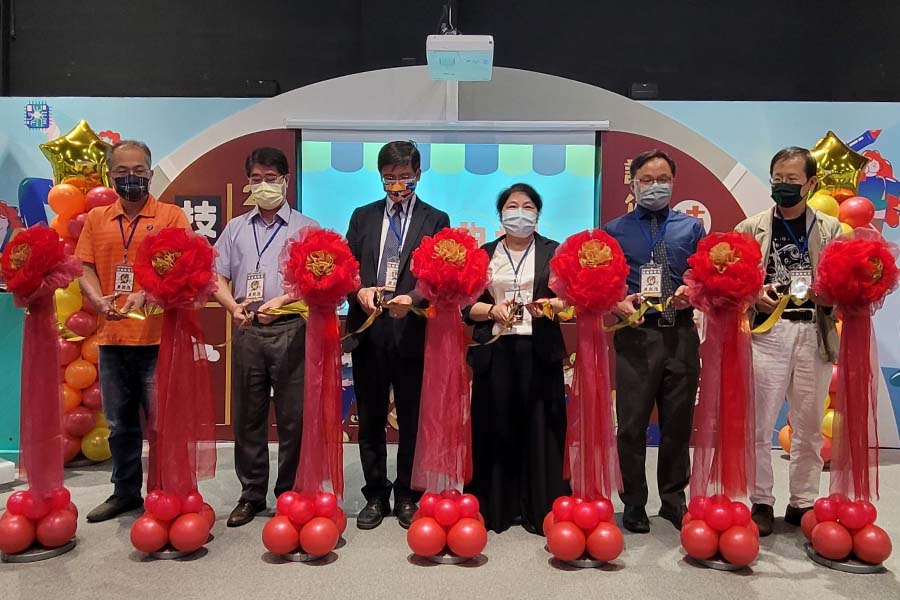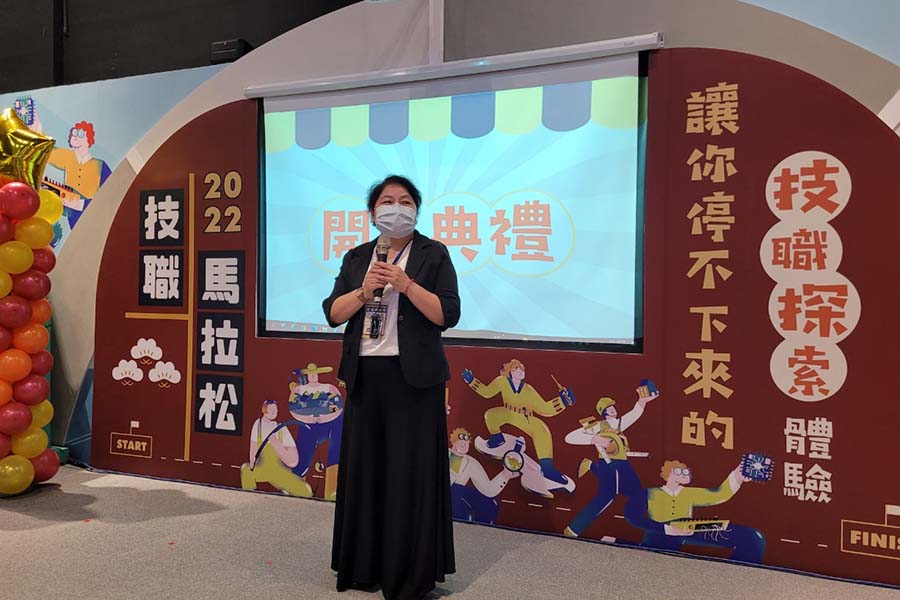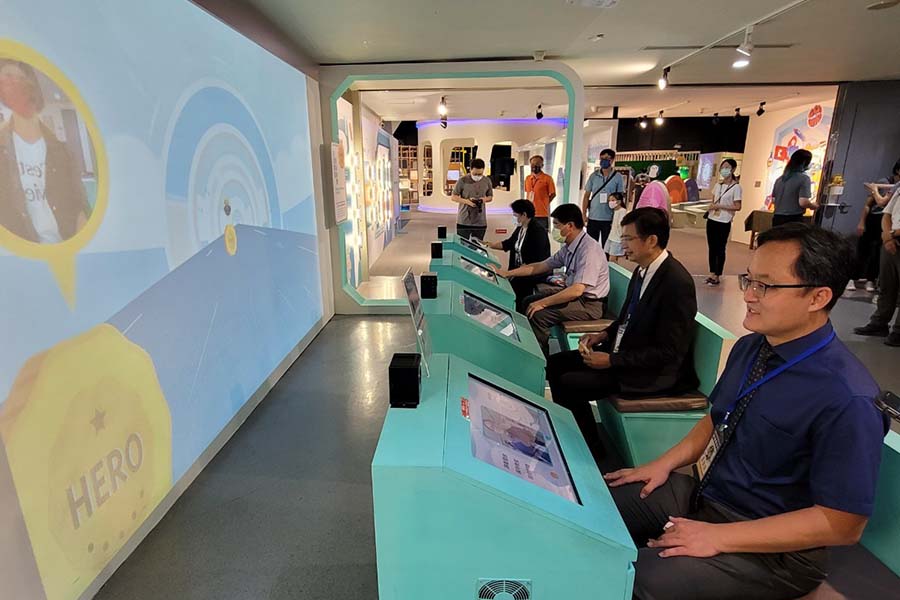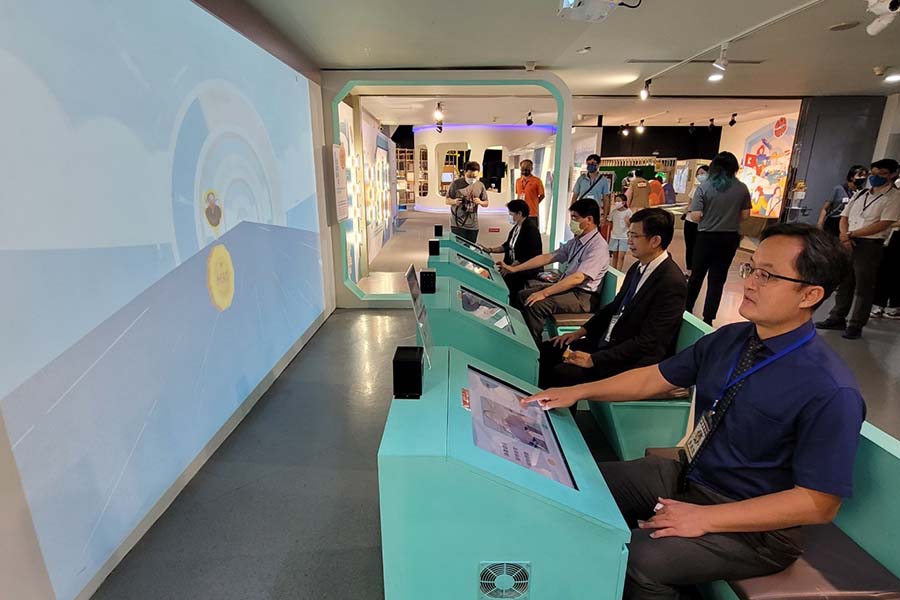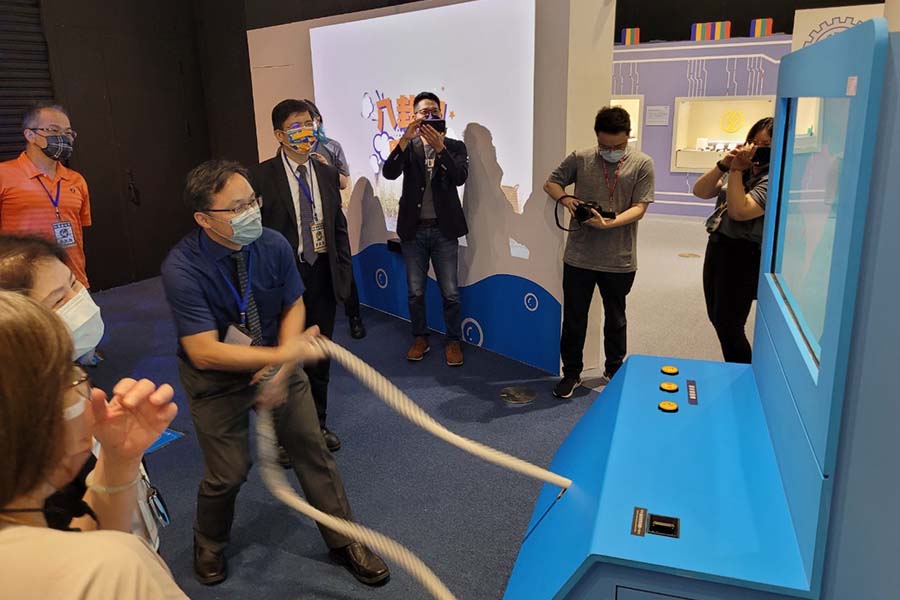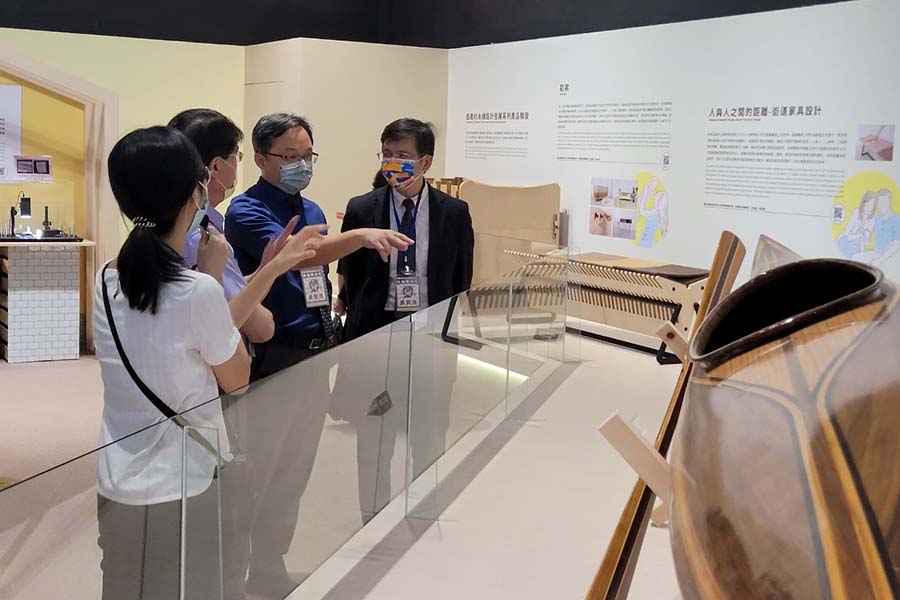National Pingtung University of Science and Technology (NPUST), National Kaohsiung University of Science and Technology (NKUST) and the National Science and Technology Museum have teamed up to expand the “Technical and Vocational Marathon” exhibit this year and give visitors an “Unstoppable Technical Vocational Exploration Experience”. For the full month of October, the two universities will be hosting a series of activities related to technical and vocational education in the New Vocational Vision Exhibition Hall on the 4th floor of the museum in Kaohsiung. An opening ceremony for the exhibition was held at 10:30 am on October 1, 2022, with NPUST Vice President Shang-Min Ma, NKUST Vice President Jia-Hong Lee, Museum Director Hsiu-Feng Lee, and many principals and VIPs from high schools and vocational colleges in the Kaohsiung and Pingtung area participating in the event.
NPUST Vice-President Shang-Min Ma said that “vocational education plays an important role when it comes to advancing Taiwan’s industry and developing the economy. Every year, the Ministry of Education injects large amounts of funds for the purpose of promoting technical education and holding related exhibition activities. The goal is to increase public awareness about technical and vocational education. Using a permanent exhibit, we can help students, parents, and the general public understand the importance of technical education and emerging trends in technological development. The “Unstoppable Technical Vocational Exploration Experience” activity will take place every weekend in October, with 15 thematic workshops open for everyone to participate in.”
For the entire month, NPUST and NKUST will be invite technical colleges and high schools from the area to host workshops and experiential exhibits on various groups of study, including: Mechanics, Power Machinery, Computers and Electronics, Chemical Engineering, Civil Engineering and Architecture, Business Management, Foreign Languages, Design, Agriculture, Food Science, Home Economics, Restaurants and Travel, Aquaculture, Maritime Affairs, and Art.
NPUST will use the exhibits to make complicated technologies easy for the public to understand—and through ‘hands-on learning’ activities, visitors will be able to get a feel for the practical approach used in vocational education. Teachers will provide students with on-site demonstrations for each of the activities. For instance, in the Mechanics group, a robot from the NPUST Department of Biomechatronics will let visitors to experience mechatronics, programing languages, and automation applications. And in the Art group, DIY 3D floating projection creations will allow people to learn about the applications and technical principles of 3D floating projections.
Hopes are that by participating in the activities, students and the general public will be able to get a grasp of the special features of vocational and technical education and that through the hands-on learning, they will be able to understand the professional development trajectories of each field of study. This way, with a proper frame of reference towards, students and parents will be more willing and interested in pursuing development in these areas of learning.

